Requires Windows OS
B-Alert gauges are fully customizable to fit the requirements of the user for real-time and offline analysis. In the standard format (shown below), the easy-to-read dashboard gauges (Top Left) and time series (Bottom) windows present B-Alert’s highly validated metrics: Engagement, Workload and Drowsiness (along with Heart Rate). Heat maps (Top Right) display EEG power spectral densities (PSD) in both spatial and temporal maps for the traditional Hz bands (Beta, Alpha, Theta, Gamma).
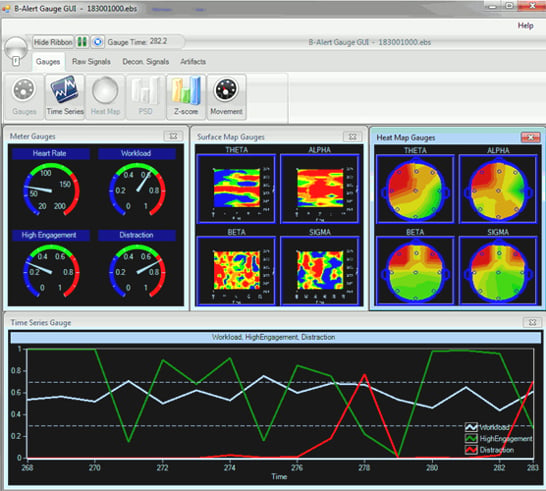
B-Alert Wireless EEG bio-metrics are normalized to an individual subject using 5-minutes of baseline data from three distinct tasks with the sleep onset class predicted from the baseline PSD values. The table below identifies and briefly describes each baseline task, and associates the task with the B-Alert classification.

Two individuals can generate different probabilities for the same task due to a) innate capability, and b) state during acquisition of baseline data. If a subject is balancing their checkbook during the eyes closed task, they will not generate as much alpha activity as if they were relaxed. This can increase the occurrence of Distraction probabilities when in a different task they do mentally relax. Subjects are more aroused the first time they complete a baseline session due to the novelty, so it is preferable to reuse the individual’s DFA to classify new data/sessions. Subjects should avoid consumption of caffeine or nicotine immediately prior to baseline acquisition.
The B-Alert Workload metric is a generalized model, so it should also be interpreted in a relative manner. For the linear 2-class workload DFA , probabilities closer to 1 reflect higher workload. EEG workload is correlated with increased working memory load and difficulty level in mental arithmetic and other complex problem solving tasks.
Z-scoring is a useful transformation to convert the relative B-Alert metrics into values that can be compared across subjects or for a repeated-measures within subject experimental design.
• B-Alert peer-reviewed metrics validation: Johnson, R.R., et al., Drowsiness/alertness algorithm development and validation using synchronized EEG and cognitive performance to individualize a generalized model. Biol. Psychol. (2011), doi: 10.1016/j.biopsycho.2011.03.003.
Commonly Asked Questions
Q. What scalp sites and EEG frequencies are used for the B-Alert High and Low Engagement, Distraction and Sleep Onset cognitive state metrics?
A. The four-class DFA is based on bi-polar mid-line recordings at FzPOz and CzPOz using 1-Hz absolute and relative power (1 Hz bin normalized to the sum of the power from 2 – 40 Hz) bins. Of the 12 variables used in the model, one is from the delta/slow theta range (1-4 Hz), two are from the fast theta range (5-7 Hz), five in the alpha range (8-13 Hz), three in the beta range (14-24 Hz) and 12 in the gamma range (25-40 hz).
Q. What scalp sites and EEG frequencies are used for the workload cognitive state metric?
A. The two-class DFA uses bi-polar recordings from C3C4, CzPOz, F3Cz, F3C4, FzC3, FzPOz using absolute and relative power. Of 30 variables, four are in delta/slow theta range, three in fast theta range, five in alpha range, seven in beta range, and 11 in gamma range.
Q. If I want to create my own classification algorithm instead of using your cognitive state metrics, what do I need to take into consideration?
A. The PSD provided by the software are useful inputs to any EEG classifier model. The PSD do not resolve individual differences in EEG amplitude that result from skull thickness, adipose tissue, scalp-electrode impedances, etc. Converting absolute PSD values to relative values assists to some degree but does not overcome all between-subject variability. Z-scoring the PSD will only help to identify the relatively high and low EEG activation across that session for that subject. The best approach is to normalize the PSD to PSD values during a controlled condition. Normalizing to multiple conditions provides the most reliable across-subject classifier. Analyzing the EEG in one-Hz bins provides greater between-subject discrimination than using classic EEG bands (i.e., alpha, beta, etc.). Even with this optimized approach, it does not provide sufficient control over variability to allow the derived metrics to be compared in an absolute manner across subjects.
Q. What are the differences between the B-Alert high engagement and workload gauges?
A. Measurements of engagement and workload are difficult to define because the terms have fairly broad interpretations and there is no objective gold standard for either. The B-Alert high engagement is typically greater during conditions rich with visual stimuli or during learning. The workload gauge tends to not change very much unless the user is performing concentrated memory encoding/extraction tasks. It is not uncommon for the engagement and workload measures to disassociate. Workload and heart rate variability tends to track more closely. These cognitive state gauges may not exhibit expected changes under all conditions, especially if the level of cognitive effort needed to perform a particular task is underestimated.
Product Family
Product Type
Intuitive, Elegant AcqKnowledge Software
Powerful automated analysis for ECG, HRV, EEG, EMG, EGG, and many more. Instantly & easily view, measure, analyze, and transform data.
Increase Subject Comfort
Compact, low-profile and comfortable enough to wear for 8+ hour sessions.
Includes Cognitive State classifications
Real-time monitoring of fatigue, stress (measured using HR metrics), confusion, engagement and workload.
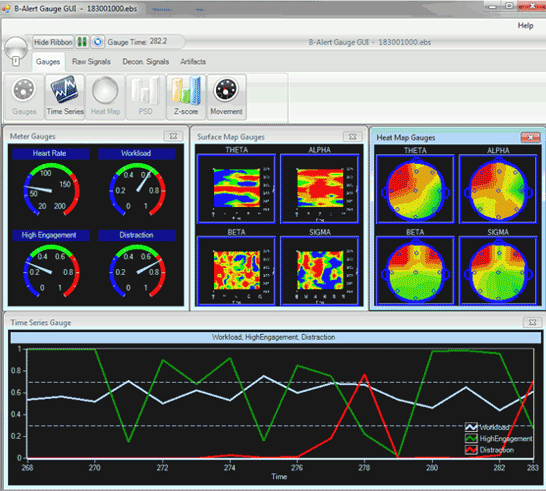
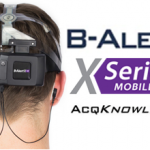
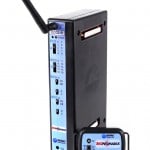
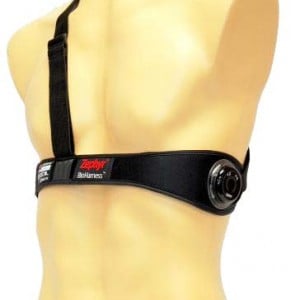
Stay Connected